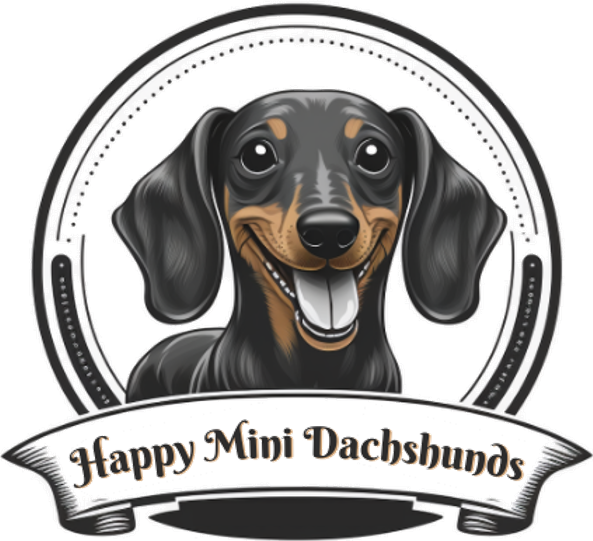Dachshunds are a popular breed of dog that has been cherished by many people for decades. They are known for their unique shape and playful personalities, making them a popular choice for families with children, as well as single owners. However, not all dachshunds are the same size, and it is essential to understand the differences between them.
Miniature dachshunds are a smaller version of their standard counterparts, and they have become increasingly popular in recent years. While they may look similar to their larger counterparts, there are key differences in size, behavior, and care that owners need to be aware of. In this blog post, we will explore how to identify if your dachshund is a mini, the benefits and challenges of owning a mini dachshund, and why they have become such a popular breed.
If you are a dachshund owner or considering getting one, understanding the differences between mini and standard dachshunds is crucial. By the end of this post, you will have a better understanding of the unique characteristics of mini dachshunds and what it takes to care for them.
Key Takeaways:
- Miniature dachshunds are smaller than standard dachshunds, but have the same unique physical characteristics and personalities
- Identifying a mini dachshund involves looking at their size, weight, and physical traits such as their ears and tail
- Owning a mini dachshund comes with benefits such as their adaptability and portability, but also challenges such as potential health issues and their tendency to bark. Additionally, mini dachshunds have become popular in popular culture, with appearances in movies, TV shows, and even as a mascot for a famous hot dog brand.
Understanding the dachshund breed
Dachshunds are a unique breed of dog that are instantly recognizable for their long, low-slung bodies and short legs. Originally bred in Germany as hunting dogs, they were specifically bred to chase burrowing animals such as badgers and rabbits. Their distinctive shape allows them to burrow into holes and tight spaces, making them effective at tracking and hunting prey.
Dachshunds are known for their playful personalities and fierce loyalty to their owners. They are intelligent dogs and can be easily trained, making them great pets for families with children. However, they can also be stubborn and independent, which can make training challenging at times.
There are three different types of dachshunds: standard, miniature, and kaninchen (rabbit). Standard dachshunds typically weigh between 16 and 32 pounds and stand between 8 and 9 inches tall at the shoulder. Miniature dachshunds, on the other hand, weigh between 11 and 16 pounds and stand between 5 and 6 inches tall at the shoulder. Kaninchen dachshunds are the smallest of the three and weigh less than 11 pounds and stand between 4 and 5 inches tall at the shoulder.
Dachshunds come in a variety of colors and patterns, including red, black, tan, and dapple (a combination of two or more colors). They also have two different coat types: smooth and wire-haired. Smooth-coated dachshunds have short, shiny hair, while wire-haired dachshunds have longer, wiry hair.
One of the unique characteristics of dachshunds is their elongated spine. This can make them prone to certain health issues, such as back problems and obesity. As a result, it is essential to provide them with proper care, including regular exercise and a healthy diet.
Mini dachshunds vs standard dachshunds
When it comes to choosing a dachshund, one of the most significant decisions is whether to get a mini or a standard. While they share many characteristics, there are also some key differences between the two.
Size is the most obvious difference between mini and standard dachshunds. As mentioned earlier, standard dachshunds can weigh up to 32 pounds, while mini dachshunds usually weigh between 11 and 16 pounds. This size difference can have practical implications, such as the amount of space they require in your home, the amount of food they need, and the amount of exercise they require.
Another significant difference between the two is their susceptibility to certain health issues. Mini dachshunds are more prone to certain health problems such as dental issues, luxating patella (a knee condition), and spinal problems due to their smaller size. In contrast, standard dachshunds are more prone to obesity and musculoskeletal issues such as hip dysplasia.
In terms of personality, mini and standard dachshunds are quite similar. Both are playful, loyal, and intelligent dogs that make great companions. However, some owners have reported that mini dachshunds can be more stubborn and harder to train than their standard counterparts.
One thing to note is that not all dachshunds labeled as “mini” are actually miniature dachshunds. Some breeders may label smaller standard dachshunds as “mini” to sell them at a higher price. To ensure that you are getting a true miniature dachshund, it’s essential to purchase from a reputable breeder who can provide documentation of the dog’s lineage and health history.
The decision between a mini or standard dachshund ultimately comes down to personal preference and lifestyle. While mini dachshunds may be more prone to certain health issues, they are also more manageable in terms of space and exercise requirements. However, standard dachshunds may be better suited for those who want a larger dog with fewer health concerns.
Identifying a mini dachshund
Now that you understand the differences between mini and standard dachshunds, it’s time to learn how to identify a mini dachshund. Here are some characteristics to look for:
- Size: Mini dachshunds are significantly smaller than standard dachshunds. They typically weigh between 8 and 11 pounds and stand no taller than 5-6 inches at the shoulder.
- Body proportions: Miniature dachshunds have a longer body and shorter legs than standard dachshunds. Their bodies are also more cylindrical in shape, giving them a unique and distinct appearance.
- Head shape: Miniature dachshunds have a slightly smaller and more rounded head than standard dachshunds. Their ears are also shorter and sit higher on their head.
- Coat: Both mini and standard dachshunds can have a variety of coat types, including smooth, long-haired, and wire-haired. However, mini dachshunds tend to have a softer and finer coat than standard dachshunds.
- Personality: Mini dachshunds are known for their spunky and energetic personalities. They are playful and affectionate, but can also be stubborn and independent.
It’s important to note that not all dachshunds that are smaller in size are necessarily mini dachshunds. Some dachshunds may be undersized due to health issues or poor breeding practices, so it’s important to do your research and work with reputable breeders or rescues.
In addition, it’s worth mentioning that dachshunds come in a variety of colors and patterns, including red, black, tan, chocolate, dapple, and piebald. These factors do not necessarily indicate whether a dachshund is a mini or standard, but can add to their unique and charming appearance.
Related: How Often Do Mini Dachshunds Poop?
The benefits and challenges of owning a mini dachshund
If you’re considering adding a mini dachshund to your family, it’s important to weigh the pros and cons. While mini dachshunds can make great pets, they also come with their own unique set of challenges.
Benefits of owning a mini dachshund
- They are great apartment dogs: Due to their small size, mini dachshunds are well-suited to apartment living. They don’t require as much space as larger dogs, making them a great choice for city dwellers.
- They make great companions: Mini dachshunds are loyal and affectionate dogs. They form strong bonds with their owners and love to spend time with them.
- They are good with children: Mini dachshunds are generally good with children, although they may not tolerate rough play. They are small enough that they can’t knock over a child, making them a safe choice for families with young kids.
- They have a long lifespan: Mini dachshunds have a lifespan of 12 to 16 years, which is longer than many other breeds. This means they can be a long-term companion for you and your family.
Challenges of owning a mini dachshund
- They can be stubborn: Mini dachshunds are notoriously stubborn and can be difficult to train. They have a strong will and may resist commands that they don’t want to follow.
- They are prone to back problems: Due to their long, low bodies, mini dachshunds are at risk for back problems. They can easily injure their backs by jumping off furniture or running up and down stairs.
- They can be vocal: Mini dachshunds are known for their vocalizations. They may bark excessively, which can be a problem in apartments or other shared living spaces.
- They require a lot of attention: Mini dachshunds crave attention and can become destructive if left alone for long periods of time. They may chew on furniture or other items if they are bored or anxious.
Mini dachshunds in popular culture
Miniature Dachshunds have been popularized in various forms of media over the years. These dogs have appeared in movies, TV shows, and even in video games. Some of the most famous representations of Miniature Dachshunds in popular culture include:
- Lady and the Tramp: One of the most iconic animated films of all time, Lady and the Tramp features a Miniature Dachshund named “Weenie” who helps Lady and Tramp escape from the dog pound.
- Wiener Dog Nationals: This 2013 family comedy film features a group of Miniature Dachshunds competing in a national dog race.
- Mad About You: This popular TV show from the 90s features a Miniature Dachshund named Murray who becomes a beloved character on the show.
- Nintendogs: This popular video game franchise allows players to take care of and play with virtual Miniature Dachshunds.
- The Ugly Dachshund: This 1966 Disney film tells the story of a Great Dane who is raised as a Miniature Dachshund and causes chaos in his owner’s life.
These representations in popular culture have helped increase the popularity of the Miniature Dachshund breed. However, it is important to remember that owning a Miniature Dachshund is a real-life commitment and should not be taken lightly. While these dogs can make great pets, they require attention, exercise, and proper care to thrive.
Conclusion
In conclusion, Mini Dachshunds are popular and beloved pets for many reasons. They are intelligent, loving, and loyal companions that make great additions to any family. However, they do come with some unique challenges, such as their stubbornness and potential health issues. It’s important for potential owners to consider these factors before committing to a Mini Dachshund.
Despite their challenges, Mini Dachshunds have made their mark in popular culture, appearing in movies, TV shows, and even as the mascot for a popular hot dog brand. Their cute and quirky personalities have endeared them to people around the world.
If you’re considering getting a Mini Dachshund, it’s important to do your research and find a reputable breeder or rescue organization. With proper care, training, and attention, your Mini Dachshund can become a beloved and cherished member of your family.

